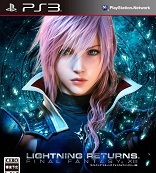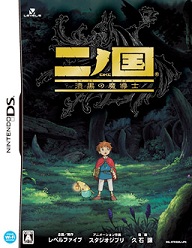Tales of Legendia
PlayStation 2
Reviewed: 05/26/2006
 Tales of Legendia is the latest console installment of the Tales series to make it overseas, but the many flaws it came with may cause some people to wish that it hadn’t.
Tales of Legendia is the latest console installment of the Tales series to make it overseas, but the many flaws it came with may cause some people to wish that it hadn’t.
Tales of Legendia‘s story is a mainly predictable quest throughout the “island” of Legacy. Players take control of Senel, an Alliance Marine out to defend his sister, Shirley. The story develops in a way that anyone who has played Tales of Symphonia should be able to see coming from a mile away. It’s almost like they simply took the story of Tales of Symphonia and rewrote it for new characters. This is regrettable, as the characters themselves are highly entertaining. In this RPG, it is not the characters which drag down the story, but vice versa, and that is nothing but shameful.
Character interaction plays an absolutely huge part of plot development in Tales of Legendia, and it is done very well. The characters talk to each other, interact, and work together in very believable ways. There is scores of spoken dialogue between the characters, as they taunt each other, joke around, or reveal personal background. At first, some characters are annoying, but each one eventually develops a likable and memorable personality. One notable example is Norma, who at first is horribly annoying, but eventually develops into a creative and witty character. It is a joy to see how the characters react to each other’s actions and how they develop relationships and deeper personalities through the game. The characters of Tales of Legendia would truly benefit from a better overall storyline, but they manage to salvage what otherwise would have been a major disappointment.
 |
| All those gymnastics lesssons finally paid off. |
The Tales series has been set apart from other RPGs since the Super Nintendo era by its battle system, and Legendia is no different. For some reason, the developers of Tales of Legendia chose to return to a single line of movement for the game instead of staying with Symphonia‘s more open system. While this can make the game seem outdated, it does allow for some new elements to be added. The battle system is real time, action combat, that can sometimes be extremely repetitious. Players will find themselves mainly using the normal attack and very rarely deviating from that. Combos are easy to pull off, as they simply require a press of a single direction on the D-Pad combined with the “X” button. 2D movement allows players to press down on the D-Pad to sneak by an opponent and start pressing them in the other direction, but this strategically has little value. The player also has access to Eres, which are special moves that require Tactical Points (TP). These can be combined with simple attack combinations to create some longer combos, but there really is no set way to go about fighting. It would be nice to have had some sort of reward for pulling off an extremely long combination, but the only reward players will get is higher damage. Some characters can’t even use the Eres for combinations, as they simply use them as magic spells. Remarkably, players will find themselves relying heavily on these spellcasters to get them through the game, due to the difficulty. While the difficulty starts off at an extremely easy level, the difficulty level increases exponentially about halfway through the game. This extreme increase can be disheartening, and certainly requires some changing of tactics.
The player also has access to a “Climax Mode,” in which enemies stand still, and playes are free to beat the living daylights out of them for an extended period of time. During this time, players can also use a climax combo for extreme ammounts of damage. There are certainly plenty of different things going on with the battle system, but most of the time it is simply a button mashing fest, with little break for the thumbs between the extreme amounts of random battles.
All in all, the battle system is entertaining, but can’t help but be a step backwards for the series. While some things are improvements- the climax mode in particular is a great feature- the overall feeling the battle system gave was button mashing. Certainly any action-RPG can suffer from this problem, but it seems particularly evident in Tales of Legendia as most battles can easily be resolved by pressing the “X” button and directional buttons alternately and/or together.
The dungeon design in Tales of Legendia is frustrating. Most pathways seem to be set up in such a way that the character has to take the absolute longest possible route. Treasure chests loom behind Chaotic Zones (areas of tougher enemies), which then leads to another treasure chest behind another Chaotic Zone, and then another, and then suddenly the path ends and players are forced to backtrack for quite some time. This would not be such a problem if random battles didn’t occur almost every three steps. Another one of the annoyances in the game are Puzzle Booths. Players will enter a duct (a warp zone between two areas), only to get forced into pushing blocks around in classic box pushing style puzzles. Many of these take less than a minute to solve, but they some get to be ridiculously annoying. Certainly puzzles are a welcome part of the game, but they seem to be just another way to artifically lengthen the game. The world map is also very, very small, although that could be seen as an advantage to those not wishing to fight 100 random battles to get to the next area. One other thing worth mentioning about the gameplay, however, are the character quests at the end of the game. Once players have beaten the game, they have the ability to play through additional quests with the characters to find out more of the backstory. While this does help for players wanting to continue, it really doesn’t help the majorly clichéd story.
 |
| It can be hard to even see the characters on screen. |
Graphically, Tales of Legendia is a mixed bag. Many of the environments are breathtaking, but the characters themselves look absolutely terrible in comparison. The lush coloration of the game is a welcoming sight, and the world map is beautiful, though small. The animations in battle seem lacking, however. The characters really have very little detail on them, which is disappointing considering the fact that most of the game is very good looking.
The music in Tales of Legendia is superb. The mixture of the epic sounding score for story sequences with the jazz-injected tunes for battles and urgent scenes is great. The voice acting, on the other hand, is not. While some of the voices seem to suit their characters, the way the voices were recorded just makes them sound awful. The voices don’t blend in with the background music at all, they simply seem to drown out everything. It’s almost as if the game can either play voices or music, but never both.
Overall, Tales of Legendia is an unfortunate victim of itself. The characters are great, but the actual storyline drags them down. The battles are good, but the sheer amount of them takes away the fun. The graphics are great, but the characters look terrible. The music is fantastic, but the voice acting is offensive. Fans of the Tales series might still enjoy the game, but newcomers to the series should play Tales of Symphonia or simply stay away.
-Joseph Wartick
| Score Breakdown | ||
| Overall Average Out of 10 See our Review Criteria |
Gameplay | Average |
| Story | Average | |
| Graphics | Good | |
| Sound/Music | Good | |
| Replay Value | Good | |
| The Verdict: 5 | ||








